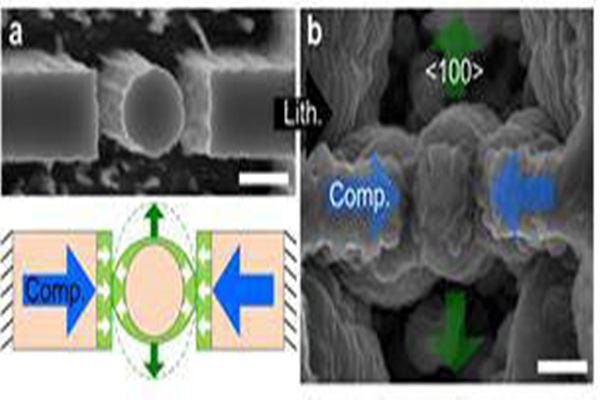Researchers from KAIST, who are currently studying in the U.S., investigated destruction phenomenon and expansion of silicon secondary cell battery’s volume.
If this problem is completely solved, silicon material that has 10 times capacity to previous graphite cathode can be used in secondary cell battery without making nano particle.
NatonalResaerch Foundation of Korea along with Senior Researcher Lee Suk Woo, Post-Doc Lee Hyun Wook (co first-author for above research), and Professor Yi Cui (corresponding-author) announced on the 7th that they investigated that there is a phenomenon where material greatly expands and breaks while silicon material charges and discharges.

Result for this research is published on Nature Communications.
Research team focused on interaction between silicon materials. Research team made many nanopillars and examined them using simulation and in-situ transmission electron microscope. It was able to discover that silicon particles give each other effects and expands and breaks, unlike when there is a single particle.
Research team said that it is meaningful to find that particles get destroyed due to each other’s influence unlike its previous known information about silicon particles in limited space like secondary cell batteries.
Senior Reporter Park, Heebum | hbpark@etnews.com